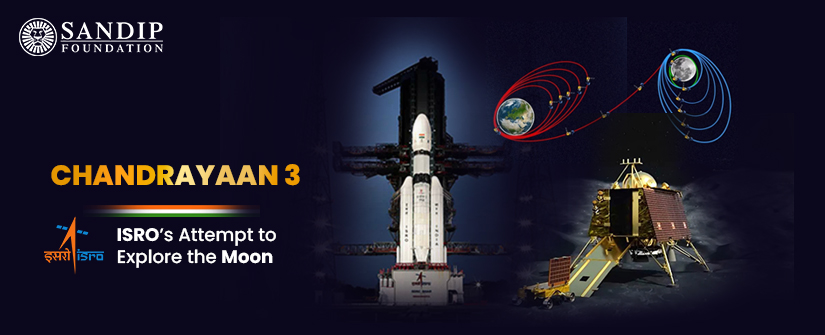The name of India’s lunar exploration programme is Chandrayaan. It comprises a number of missions with the dual objectives of exploring the Moon and conducting research. The Indian Space Research Organisation (ISRO), India’s national space agency, is in charge of running the programme.
The word “Chandrayaan” is derived from the Sanskrit terms “Chandra” (moon) and “Yana” (craft), which when combined imply “lunar craft” or “moon vehicle.” Chandrayaan missions have been numerous, each with distinct goals and degrees of complexity:
Chandrayaan-1: The first lunar probe to be launched from India, Chandrayaan-1 occurred on October 22, 2008. The existence of water molecules on the lunar surface was one of several significant findings it made after safely entering lunar orbit.
During the expedition, hydroxyl (OH) and water (H2O) were also found to have a presence on the Moon’s surface. Up to August 2009, Chandrayaan-1 was in use. Cost of Chandrayaan-1 was Rs 378 crore (approx.). Project director for ISRO’s first lunar mission, Chandrayaan 1, was Dr. M. Annadurai.
Chandrayaan-2: Launched on July 22, 2019, Chandrayaan-2 was a more complex mission that included an orbiter, a lander named Vikram, and a rover named Pragyan. The primary objective of the mission was to study the southern polar region of the Moon. While the orbiter continues to operate and gather valuable data, the lander’s attempted soft landing did not go as planned, and communication with the lander was lost during its descent.
The second attempt made by India to explore the lunar surface failed as the spacecraft failed to make a soft-landing in 2019. It’s lander and rover were destroyed, but it’s orbiter was still intact.
The orbiter is still circling the moon and can help the Vikram lander to take and send pictures and relevant data back to ISRO where it can be studied. Cost of Chandrayaan-2 was INR 900 crore (approx.). Ritu Karidhal Srivastava, the mission director, and M. Vanitha, the project director, both played important roles in the Chandrayaan-2 expedition.
Chandrayaan-3: The primary goal of Chandrayaan-3 was likely to achieve a successful soft landing on the Moon’s surface.
With the aim of researching and showcasing new technology necessary for interplanetary missions, Chandrayaan-3 is made up of an indigenous Lander module (LM), Propulsion module (PM), and Rover. The Lander will make a soft-landing on the lunar surface and then it will release the Rover, which is capable of conducting chemical analysis of the moon’s surface while it is in motion.
Lunar surface tests will be conducted by the scientific payloads present on the Lander and the Rover. The role of the PM is to facilitate the transportation of the LM by injecting it into the launch vehicle to reach the remaining 100 kilometres by orbiting in a circular manner around the moon.
The PM then has to release the LM. The propulsion module also contains a scientific payload that will be operational once the LM separates from the PM. Chandrayaan 3 budget is Rs 615 crore. Mr. P. Veeramuthuvel was appointed as the director of the Chandrayaan 3 mission in 2019.
The goals of Chandrayaan-3’s mission are:
- To show safe and soft landing on the surface of the moon
- To showcase roving lunar rover technology
- to carry out in-situ scientific research.
The Chandrayaan missions have made a substantial contribution to our knowledge of the Moon’s geology and mineralogy. They have also shown off India’s technological and space exploration prowess.
The Indian Space Research Organisation and the Japan Aerospace Exploration Agency are planning a collaborative lunar expedition called the Lunar Polar Exploration expedition, or Chandrayaan-4. No sooner than 2026, the project would send an unmanned lunar lander and rover to investigate the area around the Moon’s South Pole.
Chandrayaan-4 will investigate the precise amount of water that exists on the Moon using observational data, in-situ tests, and “ground truth data.” On the basis of this, it might be determined how much water potential colonies in the future might need to transport from Earth and how much might be obtained locally from the Moon.
The Indian Space Research Organisation (ISRO) has confirmed that its forthcoming Aditya-L1 mission to study the sun will launch on 2nd September, 2023.

